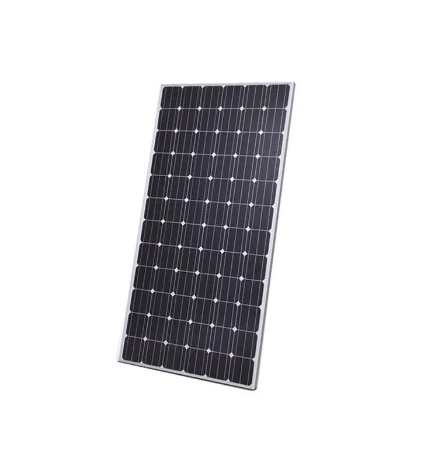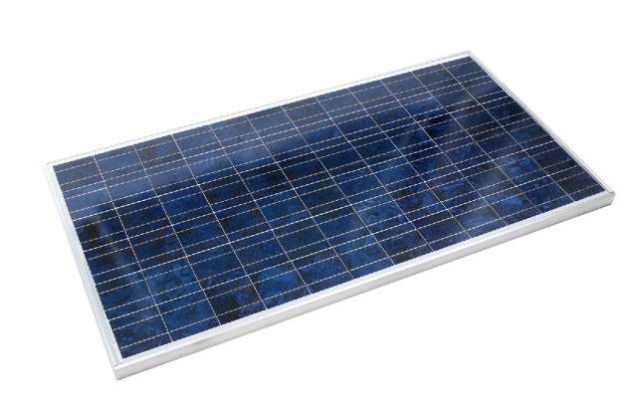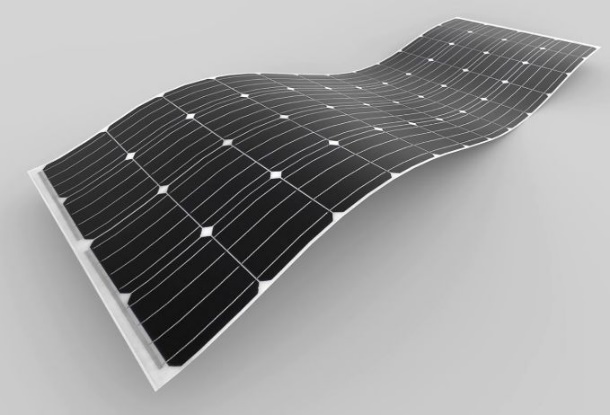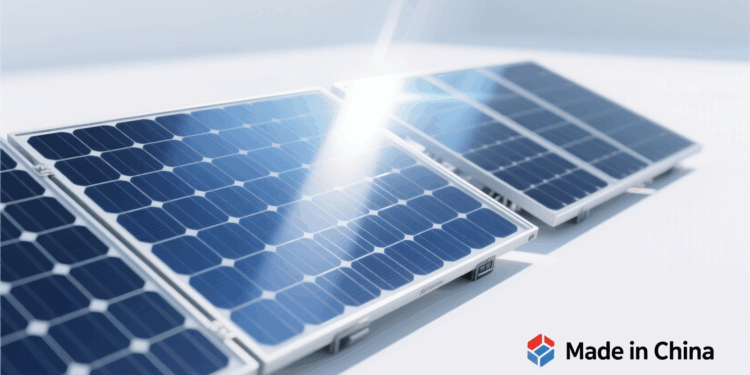Here is a step-by-step guide on choosing a supplier, pricing, quality control, delivery, customs clearance, and compliance requirements for importing solar panels from China to the United States or other markets.
Research and supplier selection
Some platforms to source suppliers:
- Alibaba (Verify “Gold Suppliers” with Trade Assurance)
- Made-in-China
- Global Sources
- Factory Visits (Best for large orders)
Red Flags to Avoid
- No business license or factory certifications.
- Unwillingness to provide samples.
- Prices significantly lower than market average.
Verify Supplier Credentials
- Certifications: ISO 9001, TÜV, IEC 61215/61730 (solar panel standards).
- Audit Reports: Request third-party inspections (e.g., SGS, BV).
- Past Clients: Ask for references from U.S./EU buyers.
Negotiating prices and terms
Pricing Factors and price impact:
- Panel Type – Monocrystalline ($0.25–$0.40/W) > Polycrystalline ($0.20–$0.30/W)
- Order Volume -10%–30% discount for 1MW+ orders
- Incoterms – FOB (buyer handles shipping) vs CIF (seller arranges shipping)
Quality control and inspections
What to Check:
- Efficiency.
- Defects (micro-cracks, hot spots).
- Packaging (weatherproof, palletized).
Shipping and logistics
The list of key documents for shipping:
- Commercial Invoice
- Packing List
- Bill of Lading
- Certificate of Origin (For duty savings)
Shipping Methods Compared
| Method | Cost | Transit Time | Best For |
| Air Freight | $5–$10/kg | 3–7 days | Urgent, small orders |
| FCL Ocean | $3,000–$6,000/container | 25–35 days | Large orders |
| LCL Ocean | $800–$1,500 | 25–35 days | Medium orders |
Common challenges and decisions
Supplier fraud – Use Alibaba Trade Assurance, request samples
Shipping delays – Book 4+ weeks early
Customs holds – Ensure UL certification, proper HS code
Defective panels – Negotiate warranty (10–25 years)
U.S. customs and import regulations
Tariffs and duties for importing solar panels from China (2024)
Current U.S. Tariffs
- Section 301 Tariffs: 15% on most Chinese solar panels (HS Code 8541.40.60).
- Bifacial Solar Panels: Exempt (0% duty as of 2024).
- Section 201 Safeguard Tariff: Expired in Feb 2022 (no longer applies).
Additional Fees
- Merchandise Processing Fee (MPF): 0.3464% of shipment value (min $27.23, max $538.40).
- Harbor Maintenance Fee (HMF): 0.125% (for ocean shipments only).
Duty Avoidance Strategies
- Import from tariff-exempt countries (Vietnam, Malaysia, Thailand).
- Use Foreign Trade Zones (FTZs) to defer duties.
- Verify if bifacial panels qualify for 0% duty.
Customs Clearance Process
- File ISF (Importer Security Filing) 24+ hours before arrival.
- Submit ACE Entry via a customs broker (~$100–$300).
- Pay Duties & Fees (MPF: 0.3464% of value).
- FDA/USDA Clearance (Not usually required for solar).
The list of cost factors and amount:
- Panels (FOB China) $250,000
- Ocean Shipping (FCL) $5,000
- Import Duty (15%) $37,500
- Customs Broker $300
- Warehousing (1 month) $2,000
- Total Landed Cost $294,800
Best Practices for Success
- Start with a trial order (10–50 panels).
- Use a freight forwarder for door-to-door service.
- Demand IEC/UL test reports before final payment.
- Monitor U.S. tariff updates via USTR.
Types of Solar Panels: A Detailed Overview
Monocrystalline Solar Panels
Appearance: Black, uniform cells with rounded edges
Efficiency: 20-24% (Highest available)
Lifespan: 25-40 years
Cost: $0.25–$0.40
Advantages
- Highest efficiency (best for small roofs)
- Best heat tolerance (lose less power in heat)
- Sleek black aesthetic
Disadvantages
- Most expensive panel type
- Slight efficiency drop in low light
Best For:
- Commercial projects with space limits
- Roofs of residential buildings
Image of monocrystalline solar panel:

Polycrystalline Solar Panels
Appearance: Blue, speckled cells with square edges
Efficiency: 15-20%
Lifespan: 20-35 years
Cost: $0.20–$0.30
Advantages
- 10-15% cheaper than monocrystalline
- Simple manufacturing = lower carbon footprint
Disadvantages
- Lower efficiency (need more space)
- Poorer heat tolerance (lose more power on hot days)
Best For:
- Large-scale solar farms
- Budget residential installations
- DIY solar projects
Image of polycrystalline solar Panel:

Thin-Film Solar Panels
Appearance: Ultra-thin, flexible black sheets
Efficiency: 10-13% (Lowest of the three)
Lifespan: 10-20 years
Cost: $0.15–$0.25
Advantages
- Lightweight and flexible
- Best performance in low light/clouds
- Lowest production cost
Disadvantages
- It decomposes 2-3 times faster than crystal panels
- It requires 2 times more space to achieve the same performance
Best For:
- RVs, boats and mobile applications
- Industrial rooftops (weight-sensitive)
- Temporary solar setups
Image of Thin-Film solar panels:

Understanding solar panel specifications
You need to understand solar panel specifications is crucial for selecting the right system. Below you can see a key specs, how they impact performance, and what to look for when buying.
Technical Specifications
- Wattage (W): Max output (350W-450W residential). Defines system size.
- Efficiency (%): Sunlight conversion (15-24%). Higher = more power in less space.
- Temp Coefficient (%/°C): Power loss when hot (-0.3% to -0.5%/°C). Critical for warm climates.
- Voltage (V) & Current (A): Must match inverter/battery (Voc, Vmp, Isc, Imp).
- Tolerance (%): Prefer 0/+3% or 0/+5% for guaranteed performance.
- NOCT (°C): Real-world operating temp (40-50°C). More accurate than lab tests.
- Size & Weight: Affects roof space and load capacity.
Cost Factors (China Imports)
- Materials: Polysilicon (~40% cost), silver, aluminum, glass.
- Manufacturing: Cheaper labor ($2.50-$4.50/hr) and energy ($0.07-$0.10/kWh).
Shipping
- Air: $0.08-$0.12/W (3-7 days).
- Ocean: $0.01-$0.04/W (30-45 days).
- MOQ: 1 container (~500 panels) for best pricing ($0.20-$0.32/W).
Tariffs & Savings
- US: 15-40% duties (bifacial exempt).
- EU: 0% duty but strict traceability.
- India: 40% on panels (often routed via Vietnam).
- Savings Tips: Bifacial panels, ASEAN sourcing, hybrid shipping.
Common Quality Issues and Solutions
| Problem | Detection method | Prevention |
| Microcracks | EL imaging | Demand cell-level inspection |
| Delamination | Visual + damp heat test | Verify EVA encapsulation quality |
| PID Effect | 96hr PID test | Buy PID-resistant panels |
| Label Fraud | Flash test at 25°C | Third-party certification |
Step quality assurance process
Factory Audits (Before Ordering)
What to verify:
- Production capacity (avoid “paper factories”)
- Raw material sources (trace polysilicon origin)
- Testing equipment (EL testers, flash testers)
Audit checklist:
- ISO 9001 certification
- In-house IV curve tester
- Laminator temperature logs
Cost: $800-$2,000 per audit (worthwhile for orders >$50k)
Pre-Shipment Inspection (PSI)
Conducted when 80% packed:
Visual inspection: Cell cracks, busbar alignment
Electrical testing:
- Power output (flash test vs datasheet)
- Insulation resistance
Packaging check: Pallet stacking, waterproofing
Arrival Inspection
Re-test 2-3% of panels at destination
Compare with PSI results (catch shipping damage)
Smart supplier qualification
- Request test reports from accredited labs (TÜV, UL, CSA)
- Verify certification validity on official databases
- Start with sample order (10+ panels for real-world testing)
- Include penalties in contracts for failed inspections
Shipping and Logistics for Solar Panel Imports
Solar panels require specialized packaging to prevent damage during transit:
Standard Packaging Methods
- Wooden crates (most secure)
- Stack limit: 28-32 panels per pallet
- Edge protectors on all corners
- Waterproof wrapping (essential for ocean freight)
Critical specs:
- Stacking weight limit
- Vibration testing: Must withstand 1.5G forces
- Humidity control
Insurance Requirements
Solar panels are classified as fragile cargo requiring special coverage:
Standard coverage: 110% of commercial value
Special clauses needed:
- Breakage coverage (standard policies often exclude)
- Temperature extremes (for desert routes)
- Freshwater damage (not just seawater)
Customs Clearance Process
Documents required:
- Commercial Invoice (with HS code 8541.40.60)
- Packing List (detailed panel counts per pallet)
- Bill of Lading (original + 3 copies)
- Certificate of Origin (for duty reduction)
- UL/IEC Certificates (mandatory for release)
Clearance Timeline:
US: 2-3 days (FDA may inspect)
EU: 1-2 days (CE mark required)
India: 7-10 days (BIS certification needed)
2024 Shipping cost example
| Cost component | FCL Ocean | Air Freight |
| Factory to port | $800 | $1,200 |
| Ocean/air freight | $18,000 | $85,000 |
| Insurance (1.1%) | $220 | $935 |
| Customs clearance | $300 | $300 |
| Port to site | $2,500 | $1,800 |
| Total | $21,820 | $89,235 |
Emerging Alternatives
Nearshoring
Chinese brands now producing in:
- Mexico (for US market)
- Turkey (for EU market)
Adds 5-8% to unit cost but saves 20% on logistics
Blockchain tracking
Real-time monitoring of:
- Container humidity
- Shock events
- Temperature extremes
Available via Maersk+IBM TradeLens
Importing solar panels from India: A viable alternative?
Cost Comparison
| Factor | India | China |
| Base Panel Cost | $0.28-$0.35/W | $0.20-$0.28/W |
| Shipping to US | $0.04-$0.06/W | $0.02-$0.04/W |
| US Tariffs | 0% (No Section 201) | 15-25% (Section 201/301) |
| Total Landed Cost | $0.32-$0.41/W | $0.25-$0.38/W |
Shipping and lead times
| Route | India to US West Coast | China to US West Coast |
| Ocean Transit | 35-50 days | 18-25 days |
| Customs Clearance | 3-5 days (FDA review) | 2-3 days |
| Port Options | Mundra, Chennai | Shanghai, Ningbo |
If you wondering why buyers are diversifying to India here are some reasons:
Geopolitical Factors
US-China tensions: Section 301 tariffs likely to increase
UFLPA risks: Xinjiang polysilicon documentation challenges
IP theft concerns: Some Chinese suppliers replicating designs
Policy Advantages
ALMM List (India): Mandates for government projects driving quality
PLI Scheme: $3.2B in Indian manufacturing incentives
No forced labor scrutiny: Unlike China’s Xinjiang region
Emerging Indian Advantages
English proficiency (easier contracts/QC communication)
Common law legal system (familiar to Western buyers)
Time zone alignment with Europe/Middle East
When India makes sense and when it doesn’t:
Choose India When:
- You need tariff-free access to US/EU markets
- Your project has social responsibility requirements
- You’re serving price-sensitive markets (Africa, Middle East)
Choose China When:
- You need cutting-edge tech
- You’re importing bifacial panels (India lags in production)
- It takes less than 30 days to complete your order
Step-by-Step sourcing process from India
- Verify ALMM Registration (for Indian suppliers)
- Audit factory (focus on cell sourcing – many import from China)
- Negotiate (10-15% discounts common for 1MW+ orders)
- Pre-shipment EL testing (mandatory – Indian QC varies widely)
- Use Mundra Port (most efficient for solar exports)
Importing Solar Panels from Other Countries: Germany, Vietnam, etc.
Germany/EU: Premium Quality at a Price
- No anti-dumping duties in Western markets
- Best temperature coefficients (-0.26%/°C avg)
- Carbon-neutral manufacturing (Key for ESG projects)
- Cost: $0.45-$0.65/W (2-3× China’s price)
- Lead Time: 6-8 weeks (vs Asia’s 4-6)
- Warranty: 15-25 years (industry’s longest)
Best For: High-end residential/commercial projects where quality trumps cost.
Vietnam: The Rising Challenger to China
- Avoids US tariffs (No Section 201/301 duties)
- Faster shipping than India
- Growing Tier-1 presence
- Cost: $0.23-$0.30/W (FOB)
- Efficiency: 20-22%
- Export Volume: #2 to US after China (8.4GW in 2023)
Watch For:
- Transshipment risks – Some Chinese panels are relabeled
- Limited HJT/TOPCon production – Mostly PERC tech
Best For: Buyers needing China-quality panels without tariffs.
South Korea: Tech Leader for Niche Markets
- Best bifacial panels (30%+ energy gain vs 20% standard)
- Qcells dominance – 5.1GW US factory by 2024
- USMCA-friendly – No tariffs if assembled in Mexico
- Cost: $0.35-$0.50/W
- Tech Edge: Qcells’ Q.ANTUM DUO (23.1% efficiency)
- Shipping: 12 days to California
Best For: Utility-scale projects needing high-durability bifacial panels.
Malaysia/Thailand: The Stealth Alternatives
- Mature supply chains
- Lower labor costs than China (by 15-20%)
- Avoids Xinjiang scrutiny (Polysilicon sourced elsewhere)
- Cost: $0.25-$0.33/W
- Lead Time: 21-28 days to US
- Certifications: Full UL/IEC compliance
Turkey
- Duty-free access to EU
- Rapid growth – 8GW production capacity in 2024
- Balanced pricing – 10-15% cheaper than EU-made
- Cost: $0.30-$0.40/W
- Shipping to EU: 3-5 days
- Specialty: Frameless BIPV panels
Best For: European installers needing fast deliveries without China risks.
Mexico
- USMCA tariff-free access
- 2-week delivery to US job sites
- Chinese brands on-site (Jinko, JA Solar factories)
- Cost: $0.32-$0.42/W
- Capacity: 7GW+ by 2025
- Logistics Edge: Delivery by truck to US in less than 72 hours
Best For: US buyers needing rapid replenishment inventory.
What are the rules and regulations for importing solar panels?
U.S. Import Regulations
Tariffs and Trade Policies
Section 201 Safeguard Tariff:
- 15% on most crystalline silicon solar panels (HS Code 8541.40.6020)
- Exemption: Bifacial solar panels (currently 0% tariff)
Section 301 Tariff:
- 25% on inverters and some components (but typically not panels)
Uyghur Forced Labor Prevention Act (UFLPA):
- Requires documentation proving no Xinjiang polysilicon in supply chain
- Detentions common without traceability audits
Certifications Required
- UL 1703 (Mandatory safety standard)
- IEC 61215/61730 (Int’l performance/safety standards)
- FCC Part 15 (Electromagnetic compliance)
- California Energy Commission (CEC) Listing (For CA projects)
Customs Documentation
- Commercial Invoice (With detailed HS code)
- Packing List
- Bill of Lading
- Certificate of Origin (For USMCA/other FTA claims)
- UL/IEC Test Reports
European Union Regulations
Key Requirements
- CE Marking (Including EN 61730/61215)
- REACH Compliance (Chemical restrictions)
- WEEE Registration (Recycling compliance)
- No Anti-Dumping Duties (But strict enforcement of customs valuation)
Other Major Markets
India
Basic Customs Duty (BCD):
- 40% on solar panels
- 25% on solar cells
ALMM List: Must source from approved manufacturers
Australia
No tariffs but requires:
- IEC 61215/61730
- CEC Approval
Brazil
- INMETRO Certification (Mandatory)
- 14.2% Import Tax
Potential Delays and Solutions
| Challenge | Decision |
| Missing UL Certificates | Request from supplier before shipping |
| UFLPA Detention | Provide supply chain audit reports |
| Incorrect HS Code | Use 8541.40.6020 for crystalline silicon |
| Port Congestion | Book PierPass appointments early |
Clearance Process
Pre-Arrival
- File Importer Security Filing (ISF-10) via ACE portal
- Submit FDA Prior Notice (if applicable)
Entry Submission
- Customs broker files CBP Form 3461
- Pay 15% tariff (unless bifacial or exempt)
Examination Risk
- FDA Inspection: Checks for UL compliance (common for solar)
- UFLPA Review: Polysilicon sourcing documentation
Choosing the Right Solar Panel Manufacturer: Key Considerations
Selecting a reliable solar panel manufacturer is very important for performance, longevity, and return on investment.
Certifications and Compliance
Verify these non-negotiable certifications:
- UL 1703 (U.S. safety standard)
- IEC 61215/61730 (Performance/safety testing)
- CEC Listing (For California projects)
- UFLPA Compliance (For U.S. imports)
Red Flags:
- Suppliers offering “self-certified” test reports.
- No traceability for polysilicon sourcing.
Manufacturing Transparency
Audit These:
- Factory tours (Virtual/in-person)
- Raw material sourcing (Polysilicon, silver paste)
- Production QC processes (EL testing, lamination)
Ask For:
- ISO 9001/14001 certifications
- Third-party inspection reports (SGS, TÜV)
Warranty and Degradation
Compare:
- Product Warranty: 10–15 years
Performance Warranty:
- 90% output at 10 years
- 80% at 25 years
Financial Stability
Check:
Bankability Ratings
Recent financial reports (Avoid firms with >80% debt ratios)
It matters because it ensures that they’ll honor warranties long-term.
Regional Considerations
For U.S. Buyers: Prioritize Vietnam/Malaysia to avoid tariffs.
For EU Buyers: Choose Turkey/Germany for faster delivery.
For Emerging Markets: Indian manufacturers (Waaree, Adani) offer cost savings.
FAQ: Importing Solar Panels from China
Q: What certifications are required?
Q: What’s the cheapest shipping method?
Q: How do I verify supplier quality?
Q: Can I import tariff-free from China?
Q: What are common pitfalls?
Resources for Solar Panel Importers
Here’s a list of some resources for solar panel importers:
- https://www.cbp.gov/trade/priority-issues/energy/solar
- https://hts.usitc.gov
- https://productiq.ulprospector.com/en
- https://www.certipedia.com
- https://about.bnef.com/solar-pv-market-intelligence/
- https://www.cbp.gov/trade/forced-labor/UFLPA
- https://www.freightos.com/freight-resources/freight-calculator
- https://seia.org
- https://www.globalsolarcouncil.org
- https://www.pv-magazine.com/2019/02/22/markets-started-to-embrace-non-conventional-modules-in-2h-2018/
- https://www.exim.gov











